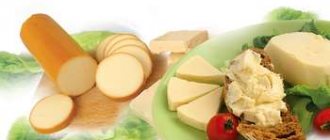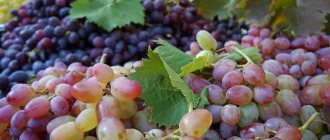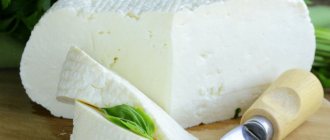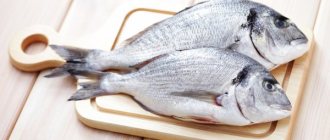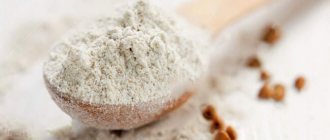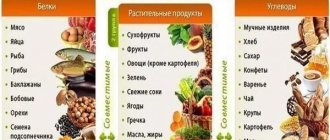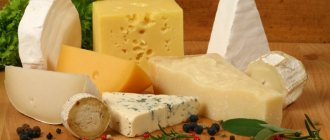“A meal without cheese is like a one-eyed beauty,” said the unsurpassed French culinary specialist Jean Anthelme Brillat-Savarin, and he was somewhat right. We are all accustomed to this product: for breakfast it is the basis of a tasty and nutritious sandwich, at lunch it makes an excellent cream soup, and in the evening what else, if not it, to snack on exquisite red wine?
But the time comes to get rid of extra pounds, and everyone begins to ask nutritionists with longing and hope in their voices, is it possible to eat cheese while losing weight - well, at least a little? The question is justified, because the calorie content in this product is simply off the charts and amounts to 300-400 kcal per 100 g. This is clearly a non-dietary indicator. However, a loophole can be found.
Is it possible?
Many people hesitate to eat cheese while losing weight. For different reasons:
- high-calorie;
- does not apply to vegan cuisine
- contains a lot of fat;
- Expensive;
- is not the basis of mono-diets;
- in a number of diets it is included in the list of prohibited foods.
Calorie content plays a decisive role, but it is precisely this that turns out to be the easiest problem to solve. Cheese can be eaten as part of most diets, because it does not interfere with weight loss because:
- at one time you are unlikely to eat more than 1-2 pieces, the weight of which does not exceed 20-30 g, respectively, it will be only 60-80 kcal;
- Those on a vegan diet can enjoy tofu;
- There are varieties with a low percentage of fat;
- the same tofu is not so expensive;
- there is no cheese mono-diet, because this product cannot provide the body with all the necessary substances;
- prohibited only in certain diets: vegan, raw food, low-fat, vegetable. And allowed in all others.
And one more huge plus in favor of cheese as a dietary product: almost all its varieties have a low GI. For comparison:
- tofu = 14 units;
- cheese = 0 units;
- suluguni = 0 units;
- cottage cheese = 29 units;
- durum varieties = 0 units.
We conclude: when losing weight, you can eat low-calorie cheese, rich in proteins and low in fat, observing the daily norm. This will not harm your figure, will allow you to diversify your diet and improve your health.
Did you know that... the French consider a day when they have not tasted a piece of cheese to be a wasted day?
Dietary cheeses (with fat content up to 10%).
We will look at the types of low-fat cheeses in order of increasing fat content (you can use the fact that normal fat content is 50-60%).
Tofu cheese boasts maximum “low-fat” content; it is a soy cheese with a fat content of only 1.5-4%.
Tofu is a low-calorie, but at the same time protein and calcium-rich product, which makes it almost indispensable in the diet of many people.
Cottage cheese (5% fat) is usually also classified as low-fat cheese.
It is most often used as an addition to vegetable salads.
Such cottage cheese also takes its place in the top nutritious but dietary products.
The famous Dutch Gouda cheese now has a low-fat analogue called “Gaudette”.
Its fat content is 7%, the product is easily digestible and has the classic cheese taste that made Dutch cheese makers famous.
Another famous cheese is a braid, consisting of many woven fibers.
This is Chechil, its fat content is 5-10%, and its salinity is 4-8%.
Many people love it precisely for its combination of milky and very salty taste.
The same fat content - 5-10% - is found in products from the Fitness, Polar, and Grunlander brands.
Benefit
If you regularly include cheese in your diet while losing weight, it will have the most positive effect on your health, as it has a number of beneficial properties:
- improves digestion;
- is a source of potassium, calcium and proteins;
- normalizes blood circulation;
- increases performance, gives a boost of vigor and energy;
- activates cellular respiration;
- relieves insomnia;
- has a calming effect on the nervous system, helping to cope with stress, thereby reducing the production of cortisol, which promotes fat deposition and stimulates appetite;
- normalizes the processes of growth and development in childhood and adolescence;
- increases erectile capabilities in men;
- Promotes visual acuity and prevents eye diseases.
It is not surprising that it has such a complex effect on the body. After all, it is a storehouse of easily digestible proteins, milk fat, amino acids, mineral salts, water- and fat-soluble vitamins (A, B1, B5, B12, C, E, D, PP).
Curd cheese, country cheese, grain cottage cheese - in English. cottage cheese (fat content 4-5%)
Grained cottage cheese is a type of low-fat cottage cheese. It is a curd grain mixed with fresh, slightly salted cream. Can be used as an independent dish, as well as for preparing various salads (for example, vegetable salad with grain cottage cheese). In Russia it is sometimes found under the unofficial names “grainy cottage cheese” and “Lithuanian cottage cheese”.
In the USA, Europe and Asia, grained cottage cheese is called cottage cheese. It is often called homemade cheese. At first glance, cottage cheese looks like fresh cottage cheese, but its texture is much softer, one might even say creamy, and its taste is a little saltier. 100g of grain cheese will provide our body with 85 calories and 17g of protein, so nutritionists recommend it even if you follow the strictest diets.
With what and how to eat? Without additives, in salads, in cottage cheese omelettes.
Grained cottage cheese is a type of low-fat cottage cheese. It is a curd grain mixed with fresh, slightly salted cream.
Can be used as an independent dish, as well as for preparing various salads (for example, vegetable salad with grain cottage cheese). In Russia it is sometimes found under the unofficial names “grainy cottage cheese” and “Lithuanian cottage cheese”.
In the USA, Europe and Asia, grained cottage cheese is called cottage cheese. It is often called homemade cheese. At first glance, cottage cheese looks like fresh cottage cheese, but its texture is much softer, one might even say creamy, and its taste is a little saltier.
100g of grain cheese will provide our body with 85 calories and 17g of protein, so nutritionists recommend it even if you follow the strictest diets.
With what and how to eat? Without additives, in salads, in cottage cheese omelettes.
Kinds
According to production method
- Fresh is cottage cheese, which in many countries is considered a cheese product.
- Soft - has a crust made of mold: with a washed crust (it is treated with alcohol) and fluffy (with mold).
- Semi-hard and hard: boiled (Parmesan, mozzarella) and uncooked (Gouda, cheddar).
- Brine: feta cheese, suluguni, feta.
- Blue - with mold (Roquefort).
- Fused: orbit, viola, friendship, amber.
- Smoked: sausage, braid.
Based on this classification, it is recommended to eat fresh and hard cheeses when losing weight. Those with mold are expensive and require getting used to their smell and taste. Despite the low calorie content of pickled varieties, they contain too much salt, which disrupts the body's water balance and promotes the formation of edema, which is unacceptable when losing weight. Processed cheese contains too many additives, dyes and flavors, so you should be careful with them. It is also not recommended to use smoked ones, since this method of preparing products is prohibited both in diets and in proper nutrition.
By raw materials
- Cow: more than 85% of varieties.
- Goat: chevroux, manchego.
- Sheep: feta cheese.
- Kobyliy: kurt.
- Mixed: feta (sheep + goat milk).
The healthiest one comes from goat's milk, but it is far from dietary, as it contains a large amount of fat. Sheep and mares are difficult to obtain. Therefore, all that remains to lose weight is cow fat.
By fat content
- Dietary (10%).
- A quarter fat (20%).
- Bold (30%).
- Three quarters fat (40%).
- Bold (45%).
- Very fatty (50%).
- Creamy (60%).
- Maximum creamy (85%).
Many varieties have a similar gradation. Therefore, it is important to carefully study the packaging and buy cheese with no more than 40% fat content. The best option is lean.
By type of starter
- Whey (ricotta).
- Rennet.
- Fermented milk: grated (green), curd.
Fermented milk is the most natural, made from skim milk, which is fermented using lactic acid starter. It can be safely eaten on any diet.
According to the presence of additives
- With nuts.
- With greens.
- With onion.
- With sugar.
- With mushrooms.
- With salmon.
- With chocolate.
- With ham, etc.
Want to lose weight without giving up cheese? Then it’s better not to buy it with additional flavors: to extend its shelf life, manufacturers add a lot of preservatives to the product.
It is a fact. Until now, no one can calculate how many varieties of cheese are produced in the world today. The largest review of this product was made by André Simon, a French cheese maker. His treatise “On the Cheese Business” mentions 839 types; he wrote it over 17 years.
Low-fat cheeses on a diet
Today you can find a huge number of different varieties of cheese on sale. They are produced using different technologies from goat, cow, horse, camel and sheep milk. Thanks to this, they have different tastes and smells. You need to be able to choose the right fermented milk product suitable for your diet. Nutritionists have different opinions about which types of cheese are most suitable for a diet. When purchasing, it is important to pay attention not only to the fat content percentage, but also to the number of kilocalories contained in 100 g of the finished product.
Solid
If you decide to lose weight, use solid low-fat varieties of fermented milk product for your diet. Most of them have high energy value, but in small quantities they do not contribute to the accumulation of fat deposits. Hard cheeses contain lecithin, which accelerates lipid metabolism, promotes the breakdown of fats and lowers cholesterol levels. On a diet you can eat the following varieties:
- Russian. It has the shape of a cylinder, yellow color, slightly sweetish creamy taste. By consistency it belongs to semi-solid low-fat varieties. Its calorie content is about 360 kcal/100 g, fat content is 50%. Often used for preparing snacks, pizza, roasting meat, fish, vegetables, etc.
- Swiss. It has the shape of a low cylinder, white or light yellow color, a pronounced aroma and a sweetish, slightly spicy taste. In the thickness of Swiss cheese there are oval or round eyes. The fat content of the product is 45%, calorie content is 380 kcal/100 g. This variety is often used for preparing soups, batters, casseroles, pies, and sandwiches.
- Parmesan is a low-fat diet cheese with a brittle, crumbly structure, a specific smell, delicate taste and a spicy aftertaste. It is consumed as an independent dish, added to soups, salads, and pizza. Parmesan is delicious paired with balsamic vinegar. Contains 32% fat, 292 kcal/100g.
- Cheddar (33% fat, 380 kcal/100g). It has a plastic consistency, yellowish color, nutty taste with a slight sour taste. It is considered beneficial due to the protein, calcium, phosphorus, amino acids, vitamins and minerals it contains. Low-fat Cheddar cheese is used to prepare toasts, salads, soups, sauces and fondues.
- Dutch. It has a milky taste with a slight sweetish or, conversely, sourish (depending on aging) taste, white or pale yellow color, dense structure with eyes of different shapes. Dutch low-fat cheeses go harmoniously with apples, grapes, and white wine. Fat content – 45%, kilocalories – 345/100 g. Can be consumed in small quantities during a diet.
- Gaudette. Semi-solid, low-fat, allowed during a diet. Contains 199 kcal/100 g and a lot of calcium, the proportion of fat is 7%. It has a mild piquant taste and is used for preparing appetizers, hot first and second courses.
Soft
Nutritionists also recommend using soft, low-fat cheese for your diet. The most popular varieties are:
- Oltermani (fat content 5-10%, 270 kcal/100 g). It has a milky taste and a sweet and sour aftertaste with a slight bitterness, a uniform texture with holes of almost the same size. Thanks to its delicate taste, minimal amount of salt and unobtrusive aroma, Oltermani is used for preparing sandwiches, salads, first and second courses, and fruit salads.
- Chechil is a fibrous, low-fat cheese variety suitable for diets. It is made in the form of threads collected in a bundle or tied with a rope, braid, or ball. Often sold smoked, it has a pungent flavor and is white or light yellow in color. Contains 5-10% fat, 253-313 kcal/100 g and a lot of salt. Used for making salads, pizza, pies.
- Fitness Viola Polar (5-10% fat, 250 kcal/100 g) is a low-fat fermented milk product that is popular among those on a diet. Often it contains yogurt instead of fat, making it even more beneficial for weight loss. It has a rich milky taste with the taste of additives that are often present in it: mushroom, chocolate, ham. Sandwiches and salads are prepared with Fitness Viola Polar.
- Low-fat Mozzarella cheese contains protein, phosphorus, calcium and fatty acids. Its fat content ranges from 17 to 24%, calorie content - 149-240 kcal/100 g. It is sold in the form of white balls in a salty solution and has a milky taste. Mozzarella is combined with pepper, basil, tomatoes, olive oil.
- Ricotta is a low-fat cheese made not from milk, but from whey without adding salt. Its fat content is 9-18%, calorie content is 174 kcal/100 g. The consistency of the product is loose with a sweetish aftertaste. Ricotta goes well with broccoli, fruit, salmon, basil, ham, and pasta.
- Feta. It is prepared from sheep's milk and has a fat content of 60% (290 kcal/100 g), but it can also be dietary, containing 30% fat, if goat's milk is used for its production. The second version of Greek cheese is suitable for diet. The color of Feta is white or cream, the texture is loose, the smell is curd. The taste depends on the variety and can be mild, creamy, salty or spicy. Combines with vegetables, herbs, vegetables, seasonings, and is often used to make salads.
- Tofu (1.5-4% fat, 73 kcal/100 g) – low-fat, made from soy milk. The consistency is similar to feta cheese, contains a lot of calcium and protein, which helps strengthen the spine and prevent osteoporosis. Salads and miso soup are prepared with Tofu; in itself it has a neutral taste, but perfectly complements the taste of other products in dishes.
- Adygei is a low-fat soft fermented milk product with a delicate texture and fermented milk taste. Contains 14% fat, 240 kcal/100 g. It contains no carbohydrates, so the product is recommended for use during a diet. Adyghe cheese is used as a filling for khachapuri.
- Curd cottage cheese (5% fat, 105 kcal/100 g) – a mixture of salty cream and curd grains. It has a delicate creamy texture, if its fat content does not exceed 5%, it can be consumed even during the most strict diet. It is often added to omelets, salads, and consumed as an independent dish.
- Light processed cheese is made from rennet cheeses and other dairy products using melting salts. 100 g of product contains 7.5% fat. Thanks to its creamy consistency, it is ideal for spreading on bread. It has a delicate creamy milky taste.
- Suluguni (24% fat, 285 kcal/100 g) is a classic Georgian fermented milk product. It has a slightly salty taste and a dense elastic consistency. Color – white or light yellow, can have many eyes, is used to prepare many dishes of Georgian cuisine.
Calorie content
Since to lose weight you need to choose the lowest-calorie cheeses, this table will show you in comparison which of them are dietary and which are better not to abuse.
Calorie content in the table is presented in ascending order, i.e. the lowest calorie varieties are in the first positions.
Low calorie
High calorie
According to this table, the leaders are:
- The highest calorie is Mascarpone, the lowest calorie is Tofu.
- The highest protein content is Parmesan, the lowest protein content is Mascarpone.
- The fattest is Mascarpone, the least fat is Fermented Milk.
- The most carbohydrate-rich one is Omichka.
From the world of stars. Salvador Dali's favorite cheese is Camembert.
Why is it not necessary to look at the fat content of cheese in dry matter?
Because you're eating a piece of cheese, not a piece of dry matter.
It is worth noting that the standard fat content of cheese is 50-60g or 50-60% in dry matter. Many people take the percentage of fat content indicated on the packaging literally. Those. I ate 100g of 50% cheese, which means I got 50g of fat (450kcal). Wow! 40 minutes on the elliptical! But that's not true! So, if it is indicated that the fat content of Swiss cheese is 50%, this means that 100 g of cheese contains 32.5 g of fat (in cheese of this type, per 100 g of weight there are usually 65 g of dry matter, 50% of which will be 32. 5 g).
Contraindications
You should refrain from this method of losing weight if you have the following conditions and factors:
- obesity
- ulcer;
- gastritis;
- tendency to edema;
- pancreatitis;
- lactose intolerance;
- cholecystitis;
- atherosclerosis;
- hypertension;
- kidney diseases;
- children under 2 years of age.
Naturally, one piece 2-3 times a week will not worsen the listed diseases. However, if you plan to include cheese in your regular diet, the presence of these diseases will prevent you from doing so.
In addition, do not forget that each variety also has its own list of contraindications. For example, those with mold are prohibited to eat during pregnancy. But tofu can be consumed by people suffering from lactase intolerance. So each case requires separate consideration and consultation with a doctor.
This is interesting. The shelf life of some varieties is very limited, and after it expires they can be poisoned. This, for example, is brie.
Cream cheese, cream cheese (fat content 12%)
This Philadelphia type (light) cheese consists of pasteurized skim milk and milk fat, whey protein concentrate, cheese culture, salt, whey.
With what and how to eat? With toast, bread, vegetables.
This Philadelphia type (light) cheese consists of pasteurized skim milk and milk fat, whey protein concentrate, cheese culture, salt, whey.
With what and how to eat? With toast, bread, vegetables.
Ways to lose weight
Fasting day
The daily dosage is no more than 200 g, i.e. approximately 40 g for each meal (2 plates/pieces). For this purpose, you can choose tofu, Fitness Cheese (semi-hard rennet), curd or Serbian cheese, as well as any hard varieties. Green tea and water are allowed. You can't eat anything else. The result is minus 1 kg. You can repeat it only once a month.
Read more about how to lose weight on a “forbidden” product as part of a fasting day in our separate review.
Cheese diet
Type: low-calorie, protein. Duration: 1 week. Results: 3-4 kg. Difficulty: medium.
Recommended for weight loss during intense training. All low-fat protein foods are allowed (chicken breast, fish, fermented milk drinks, egg whites, legumes). The main condition is to eat a slice of low-fat cheese three times a day. Nutritionists recommend mozzarella, ricotta, almetta, Philadelphia, Adyghe. It is advisable to include different varieties in your diet.
Interesting fact. The French are passionate about cheese. They consider it not only dietary due to the minimal amount of carbohydrates, but also prolonging life and giving the joy of love (an aphrodisiac).
Lowest calorie cheese
After studying popular low-fat varieties of fermented milk products, it becomes obvious that Tofu is most suitable for diet and weight loss. It is the lowest in calories, resembles ordinary cottage cheese in color and texture, but does not contain any ingredients of animal origin. Tofu is a plant product made from soy milk through special processing. This low-fat cheese contains a lot of easily digestible protein, iron, calcium and is completely free of cholesterol .
Recommendations
How to choose a quality one?
Calorie content should be no more than 300 kcal per 100 g of product, fat content should not exceed 40%. The lower these indicators, the better the weight loss results will be. The composition should contain only natural ingredients: sourdough and milk, possibly adding spices. Don't forget to look at the expiration date. The wax coating must be smooth, solid, uniform in color, without blisters, damage or white deposits.
The color is milky, with a yellowish tint. The smell should not be sour or pungent. It squeaks on the teeth - it contains starch, it’s better not to buy it. A sticky consistency indicates a violation of manufacturing technology. The taste of a quality product is salty with a creamy tint.
When is the best time to eat?
The optimal time is for breakfast. According to scientific research, in the morning the stomach is able to fully absorb all the nutritional elements of cheese. For lunch, you can use it as an ingredient in a dietary dish (cream soup, julienne, vegetable salad). For dinner, you can eat a small slice, since, according to the principles of proper nutrition, the last meal should be protein. But late in the evening, at night, it is not recommended to eat it either when losing weight or with a normal diet. Proteins and fats will weigh down your stomach and slow down the digestion process.
In any form?
Exclusively fresh. A baked cheese cap and a viscous mass of creamy soup are the height of culinary sophistication, but they are of little use. During heat treatment, the protein is destroyed and the amount of fat increases. And try not to eat it cold. Cut a piece and keep at room temperature for at least half an hour.
How to store it correctly?
On the top shelf of the refrigerator for no more than a week. As soon as mold appears on it, it becomes hard, covered with a yellow crust or droplets of liquid, do not risk your health - throw it away.
With the world - one by one. The leader in production is America. The leader in consumption is Greece. The best product is made in Switzerland. The experts are the French.
Homemade skim milk cheese
You can also use skim milk for cooking.
In this case, the main ingredients for making low-fat cheese will be:
- cottage cheese (low-fat) – approximately 0.5-0.6 kg;
- egg – 1 pc.;
- milk with 0.5% fat content - half a liter;
- salt a level teaspoon;
- soda – 2 g.
The process begins, as in the previous case, by mixing cottage cheese with milk. To do this, you can use both forks, a whisk, and a blender. As a result, you should get a relatively homogeneous liquid mixture, which we put on low heat and stir occasionally with a spatula.
The heating process is necessary to separate the cheese base from the whey. This usually takes about 10-15 minutes.
After that, put everything in a colander so that the liquid drains completely.
Then we return the cheese base back to the saucepan, add the egg, salt, and soda and mix well (you can use a blender at low speed).
Place the saucepan on the fire (you can also use a water bath if the walls of the saucepan are thin enough). Stir and when you start to notice that the mixture thickens and lags behind the walls, you can stop.
Pour the mixture into molds and put it in the refrigerator to cool and harden.
Find out how to lose 5 kg in a week on our website.
About the correct squats for weight loss in the article. The effectiveness of squats, technique and types.
About the benefits of boiled beets for weight loss here.
Fresh mozzarella cheese "buffalo" type (fat content 18%)
Not to be confused with the regular one! Found in the form of white balls soaked in brine, the cheese does not last long. The most delicious one-day mozzarella, but for now you can only try it in Italy. Buffalo mozzarella is now produced all over the world. Not to be confused with the traditional variety of mozzarella used in pizza. Its fat content is 23%.
With what and how to eat? The best option is with olive oil, ground black pepper, basil and tomatoes. This cheese can also be quickly marinated in olive oil with herbs, garlic and sun-dried tomatoes and baked.
Not to be confused with the regular one! Found in the form of white balls soaked in brine, the cheese does not last long. The most delicious one-day mozzarella, but for now you can only try it in Italy.
Buffalo mozzarella is now produced all over the world. Not to be confused with the traditional variety of mozzarella used in pizza. Its fat content is 23%.
With what and how to eat? The best option is with olive oil, ground black pepper, basil and tomatoes.
This cheese can also be quickly marinated in olive oil with herbs, garlic and sun-dried tomatoes and baked.

